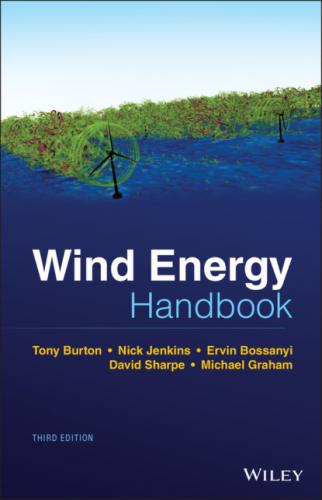The pressure variation (minus the ambient static pressure of the undisturbed flow) around an aerofoil is shown in Figure A3.10. The upper surface is subject to suction (with the ambient pressure subtracted) and is responsible for most of the lift force. The pressure distribution is calculated without the presence of the boundary layer because the normal pressure difference across the boundary layer is small enough to be neglected. Higher order, more accurate solutions for the pressures and forces may be obtained by taking account of the effect of the slowed velocity in the boundary layer displacing the streamlines of the quasi‐inviscid flow outwards by a small amount like a small thickness addition to the profile.
Figure A3.10 The pressure distribution around the NACA0012 aerofoil at α = 5° (shown schematically around the aerofoil).
Figure A3.11 shows the same distribution with the pressure coefficient (
Figure A3.11 The pressure distribution around the NACA0012 aerofoil at α=5° (pressure coefficient CP vs x/c).
The effect of the boundary layer is to modify the pressure distribution at the rear of the aerofoil such that lower pressure occurs there than if there is no boundary layer. There is no stagnation pressure at the trailing edge, where the pressure tends to be much closer to ambient. The boundary‐layer‐modified pressure distribution gives rise to pressure drag that is added to the skin friction drag, also caused by the boundary layer.
A3.6 The stalled aerofoil
If the angle of attack exceeds a certain critical value (typically 10° to 16°, depending on the Re), separation of the boundary layer on the ‘suction’ (or upper) surface takes place. A wake forms above the aerofoil starting from this separation (Figure A3.12), and the circulation and hence the lift are reduced and the drag increased. The flow past the aerofoil has then stalled. A flat plate at an angle of attack will also behave like an aerofoil and develop circulation and lift but will stall at a very low angle of attack because of the sharp leading edge. Cambering (or curving) the plate will increase the angle of attack for stall onset, but a much greater improvement can be obtained by giving thickness to the aerofoil together with a suitably rounded leading edge.
A3.7 The lift coefficient
The lift coefficient is defined as
(A3.3)
U is the flow speed and A is the plan area of the body. For a long body, such as an aircraft wing or a wind turbine blade, the lift per unit span is used in the definition, the plan area now being taken as the chord length (multiplied by unit span):
(A3.4)
Figure A3.12 Stalled flow around an aerofoil.
In practice it is convenient to write for pre‐stall conditions:
where a0, called the lift‐curve slope
Note that a0 should not be confused with the flow induction factor.
Thin aerofoil potential flow theory shows that for a flat plate or very thin aerofoil, the Kutta–Joukowski condition is satisfied by
where α0 is the angle of attack for zero lift and proportional to the camber, being negative for positive camber (convex upwards).
Therefore
with a0 = 2π.
Generally, thickness increases a0 and viscous effects (the boundary layer) decrease it.
Lift, therefore, depends on two parameters, the angle of attack α and the flow speed U. The same lift force can be generated by different combinations of α and U.
The variation of Cl with the angle of attack α is shown in Figure A3.13 for a typical symmetrical aerofoil (NACA0012). Notice that the simple relationship of Eq. (A3.5) is only valid for the pre‐stall region, where the flow is attached. Because the angle of attack is small (< 16°) the equation is often simplified to
(A3.6)
Figure A3.13 Cl − α curve for a symmetrical aerofoil.
